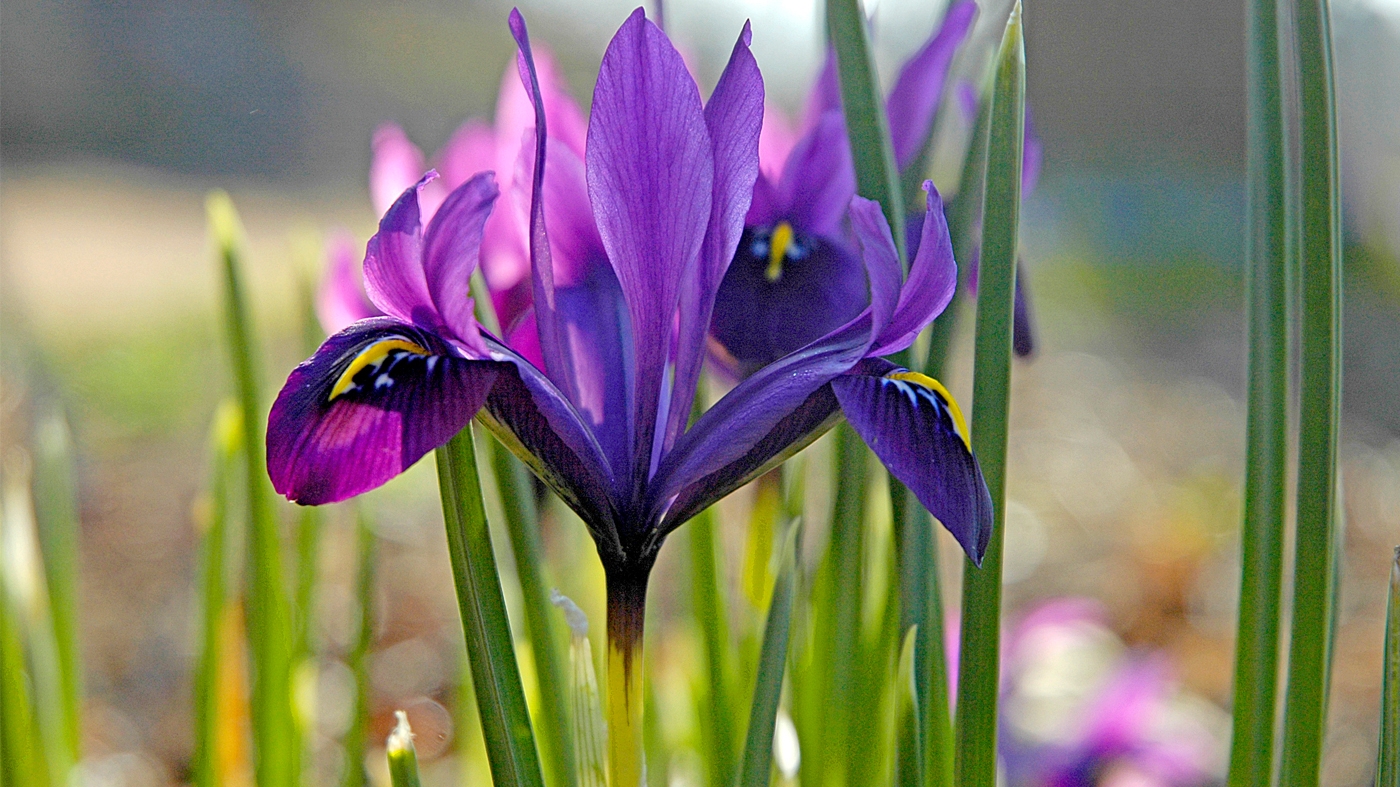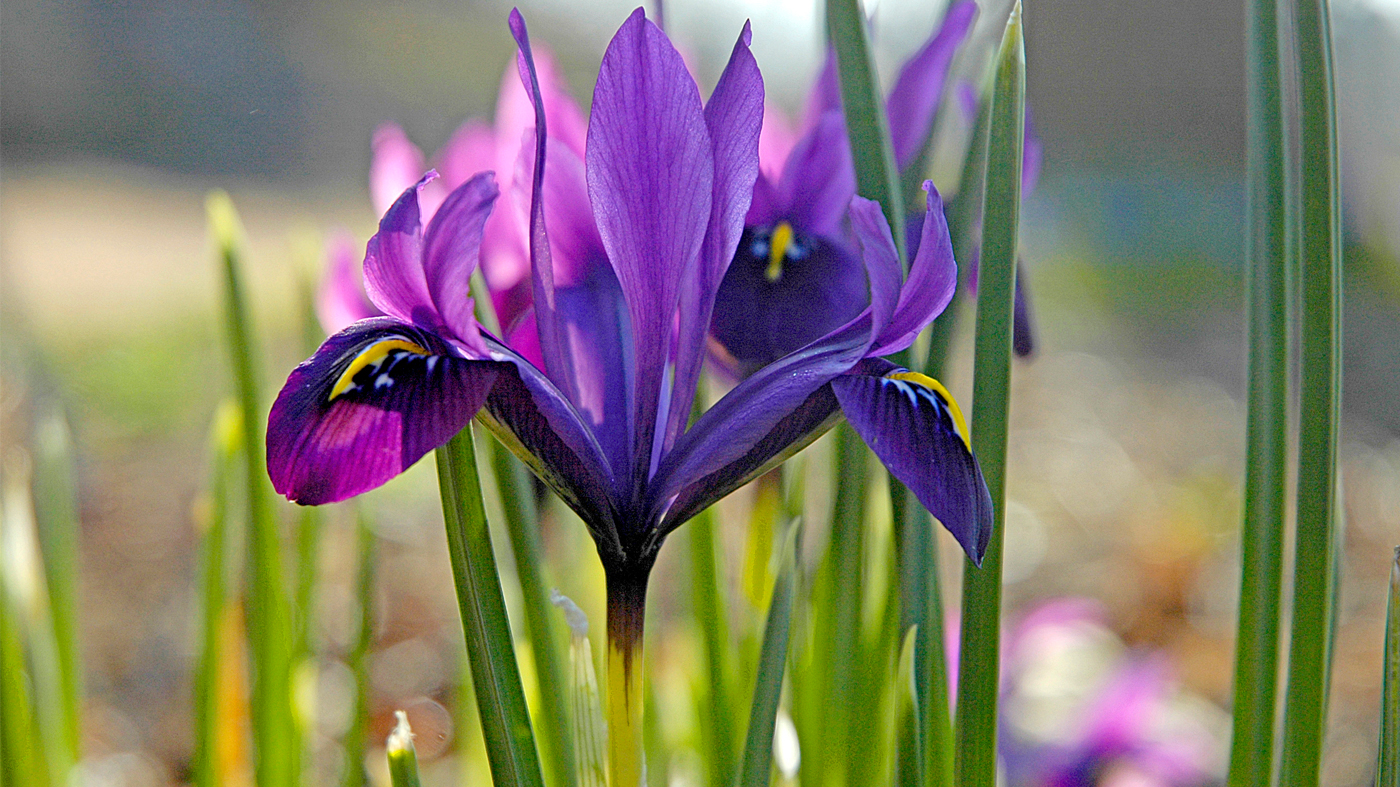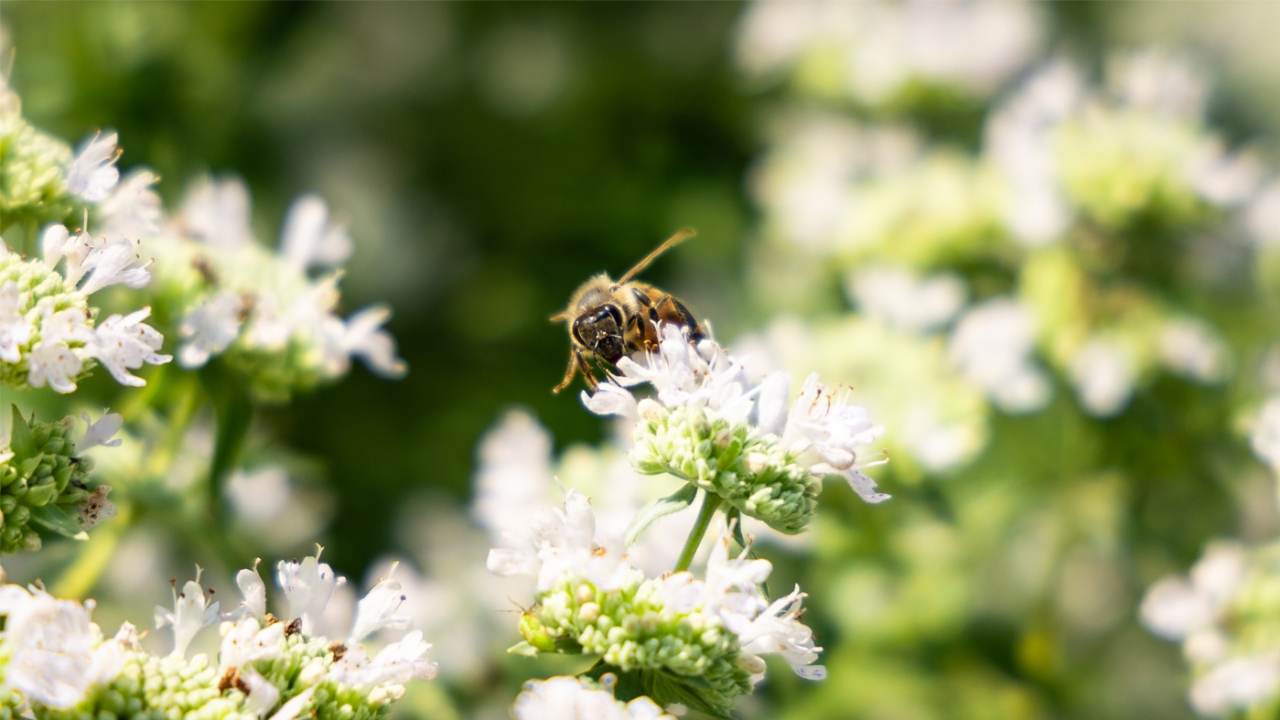

Plant Science & Conservation
Garden Stories
Let’s take an urban pollinator safari
When you think of the city, nature may not be the first thing that comes to mind. But when you slow down and (literally) stop to smell the flowers, a hidden world appears: hungry herbivores grazing leaves, predators chasing down prey, animals migrating by the thousands. A real-life nature documentary is happening here, in the Chicago area, and insect pollinators like bees, butterflies, and beetles are the stars of the show.
As an ecologist, I study how insect pollinators make a living in the city, and how green spaces can support their populations. I’ve learned the best way to bring your pollinator neighbors out of hiding is to plant their favorite flowers. To a pollinator, flowers are food: pollen is protein and nectar is carbs. And you don’t need a large space. Pollinators can be attracted to gardens of all sizes, from a prairie yard to a pot of sunflowers or herbs on your balcony.
Our pollinator neighbors come and go throughout the season, but in the city they’re most abundant and diverse in the summer months. Get to know your neighbors with these profiles of pollinators active in summer. Plant their favorite flowers, then challenge yourself to find all seven of them, in our gardens or yours. This way you can not only get to know your neighbors, but also measure the positive impact of your garden. You can help scientists like me track pollinators by taking photographs and uploading them to iNaturalist.org.
Happy pollinator watching!
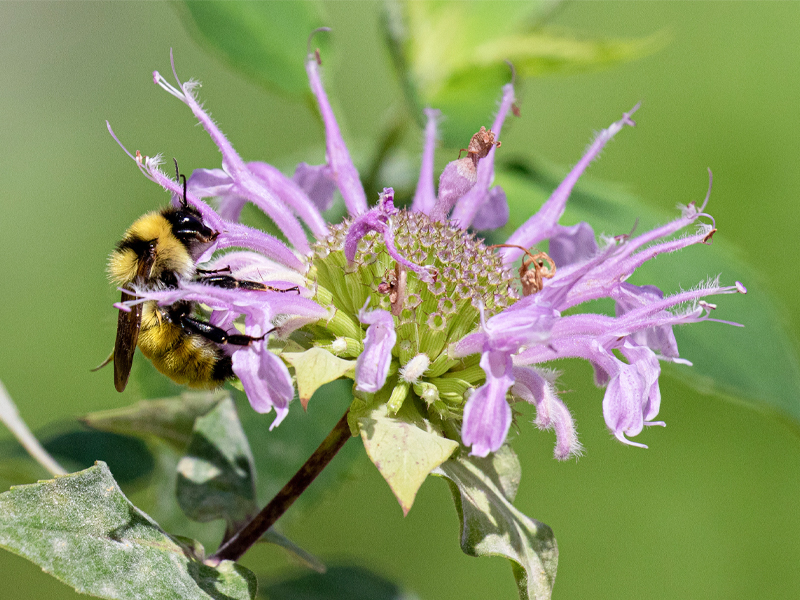
Golden northern bumble bee (Bombus fervidus)
Wild bergamot (Monarda fistulosa)
Bumble bees are a doorway into pollinator watching. They’re common, conspicuous, and active across the growing season—from spring, when queens emerge from hibernation, through fall, when mustachioed males gather on the heads of asters and goldenrods. Golden northern bumble bees are one of the most distinctive, sporting long yellow hairs and a solid black stripe between the wings. Welcome these gentle, teddy-bear bees into your garden by planting wild bergamot.
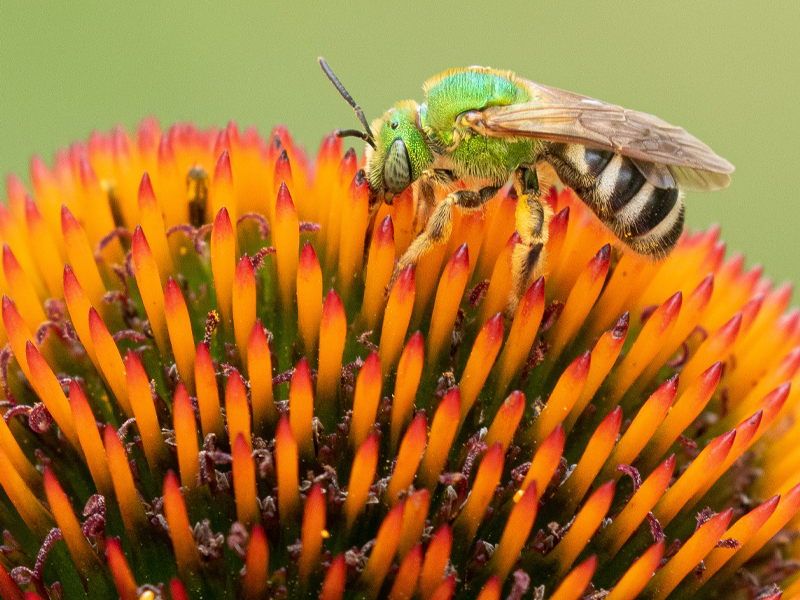
Bicolored striped sweat bee (Agapostemon virescens)
Purple coneflower (Echinacea purpurea)
Bees can be green? Yes! And bicolored striped sweat bees shatter most other assumptions about bees too. Like most of the 500 species of bees in Illinois, they do not live in hives, they don’t make honey, and they are quite gentle. These bees live in communal nests—the bee equivalent of an apartment complex—with females foraging on flowers entirely for their own offspring. And, because they do not have a large nest to defend, females are gentle. After planting purple coneflower, mark your calendar for July 4 to look for these emeralds in your garden (though they can be spotted from May through September).
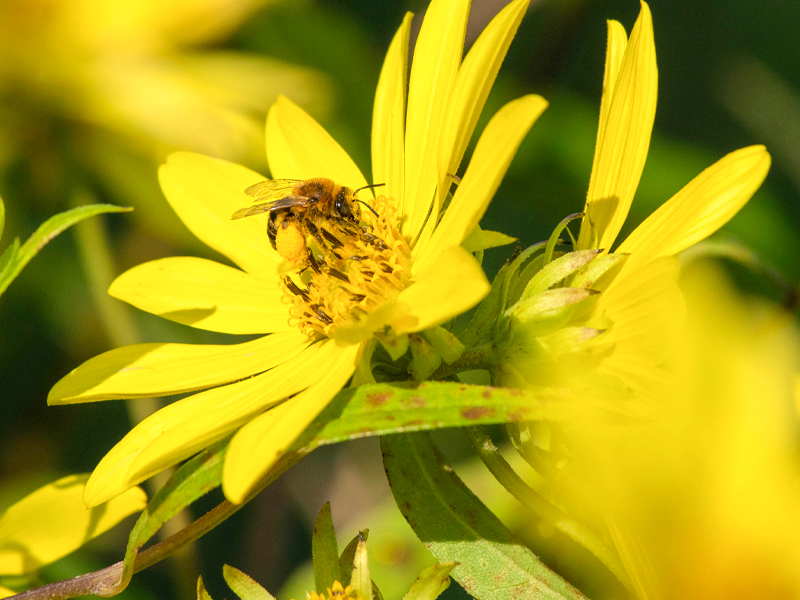
Sunflower longhorn bee (Melissodes trinodis)
Sunflowers (Helianthus spp.)
It’s easy to love sunflowers, but once you meet the sunflower longhorn bee, you’ll find yourself head over heels. These bees are specialists; sunflowers and related plants are their sole pollen source. Furry orange females show up in the morning, methodically packing their hind legs full of orange pollen. Males are not far behind, careening around the garden hoping to meet an interested mate. When he stops for a sip of nectar, glimpse his namesake “long horns”—extra-long antennae that help him locate flowers and females. At night, take a flashlight out to your garden and shine it on the sunflower, where you might just spot a sleeping male sunflower bee!
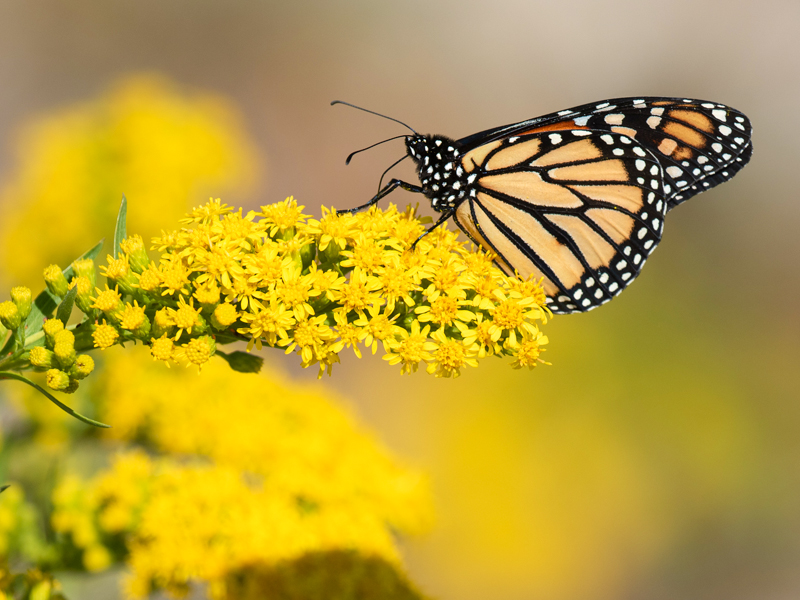
Monarch (Danaus plexippus)
Meadow blazing star (Liatris ligulistylis)
You’ve heard of epic animal migrations in faraway places, but did you know that Chicago hosts one of its own? Each fall hundreds of thousands of monarch butterflies embark on their grand journey south, and on days with favorable winds, you can see them over the Edens expressway and flying in off of Lake Michigan. To fuel their journey, monarchs need calorie-rich nectar. One of their favorite plants is blazing star, whose nectar-rich flowers will help carry them all the way to the Oyamel fir forests of central Mexico, nearly 2,000 miles away.
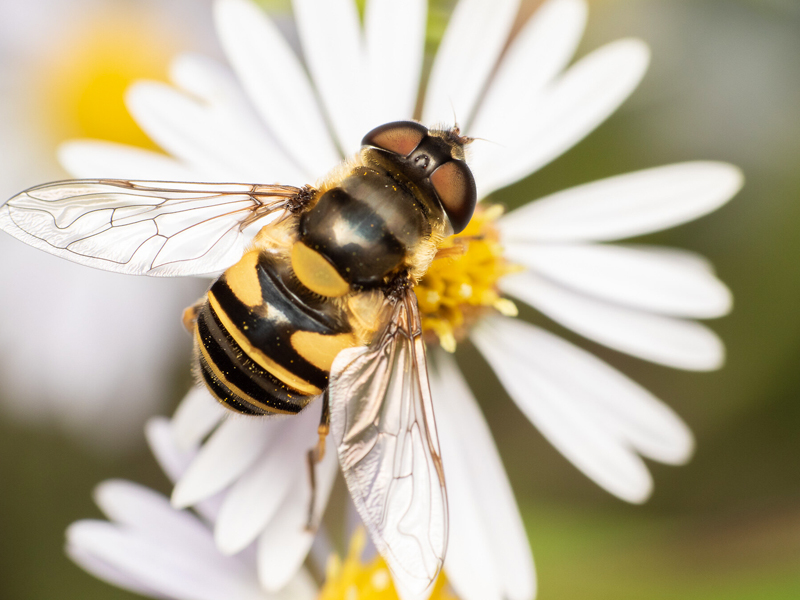
Transverse-banded flower fly (Eristalis transversa)
Black-eyed Susan (Rudbeckia hirta)
Is it a bee? A wasp? No, it’s a fly! Hover flies are true masters of disguise, capable of fooling even the most seasoned pollinator watcher. Distinguish hover flies from other insects by their big eyes and short, stubby antennae. Since flies cannot sting, they have evolved to resemble other insects that can. Mimicry runs deep in the fly world, from robber flies that resemble furry bumble bees to conopid flies that resemble narrow-waisted potter wasps. The transverse-banded flower fly closely resembles a yellowjacket wasp, and can be attracted to gardens by planting asters like black-eyed Susan.
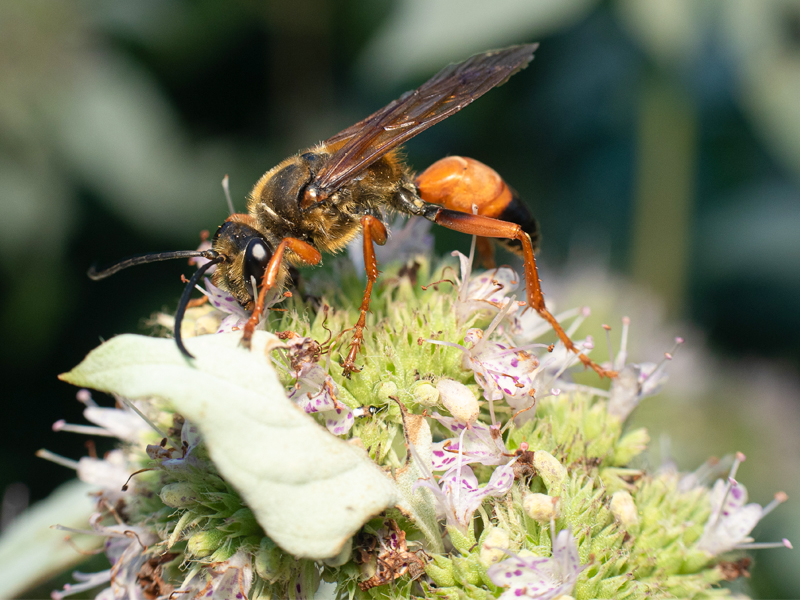
Golden digger wasp (Sphex ichneumoneus)
Virginia mountain mint (Pycnanthemum virginianum)
Wasps are not everyone’s favorite pollinators. However, this perception largely comes from a minority of aggressive, social wasps that crash picnics and cookouts. Most other wasps build solitary nests, interested only in sipping nectar and hunting their arthropod of choice. For spider wasps, it’s spiders. For cicada killers, it’s cicadas. For golden digger wasps, it’s katydids, slow-moving, long-legged relatives of grasshoppers. Fueled by the nectar of mountain mint, a female digger wasp delivers a swift sting (or many stings) to immobilize the katydid and carries it back to her underground burrow. Since her life revolves around flowers and katydids—not people—she will never bother the curious gardener. In fact, the more you watch, you might even begin to enjoy these bright orange Lamborghinis of the sky in your garden.
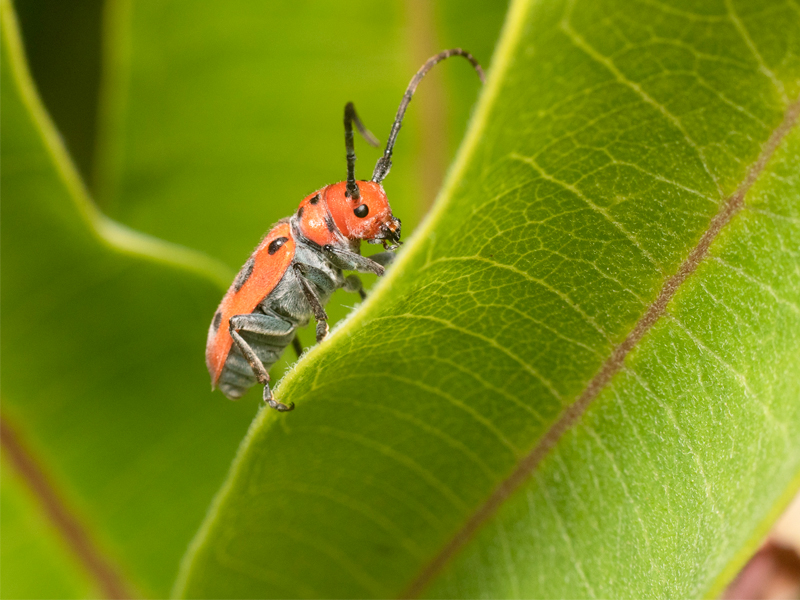
Red milkweed beetle (Tetrophthalmus tetraopes)
Common milkweed (Asclepias syriaca)
These beetles might be mistaken for ladybugs at first—lipstick red with black polka dots down their backs—but their long antennae are a dead giveaway you’ve found a longhorn beetle. Red milkweed beetles lounge on common milkweed, munching slowly on leaves and looking for mates. Milkweed leaves are full of a sticky sap—their namesake “milk”—that is not very pleasant for the beetles to eat. To overcome this challenge, beetles dam up the flow of sap to make the tips of the leaves much more palatable. The best way to find red milkweed beetles is to look for a common milkweed plant from late June through early August with little nibbles taken out of the tips of the leaves.
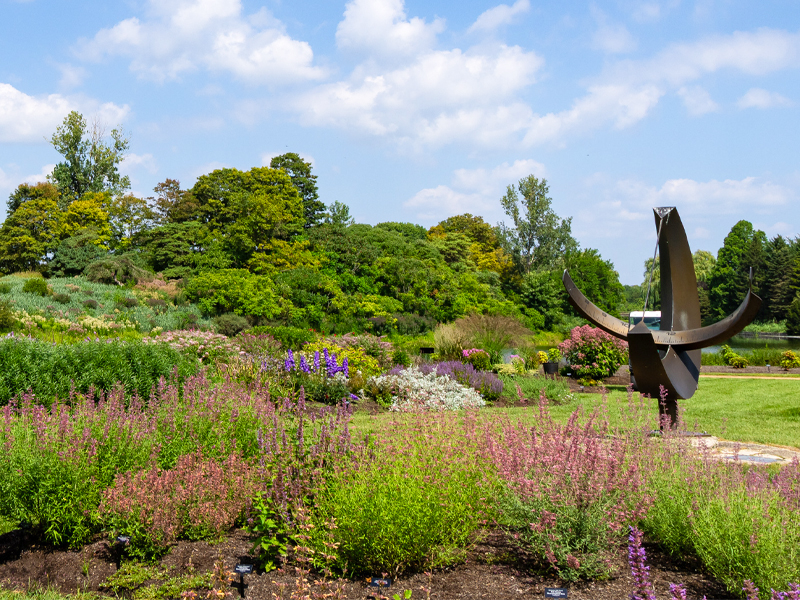
Stop by our Bernice E. Lavin Plant Evaluation Garden to see these plants abuzz with pollinators.
Summer is the time for this nature documentary!
